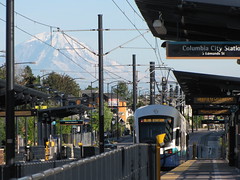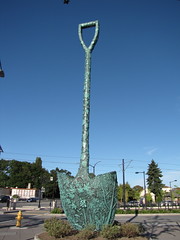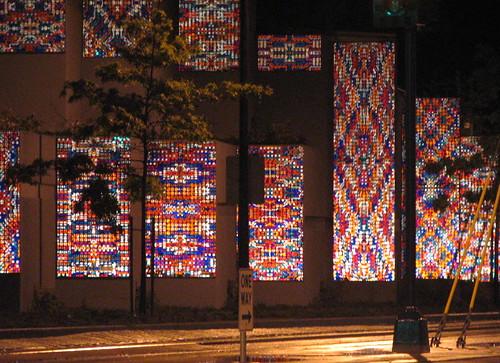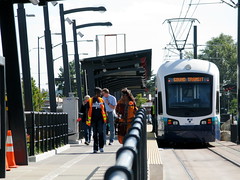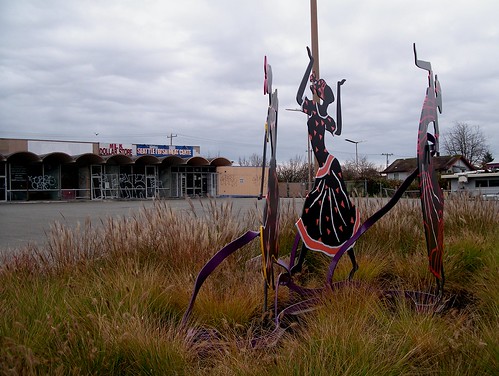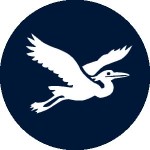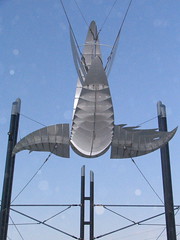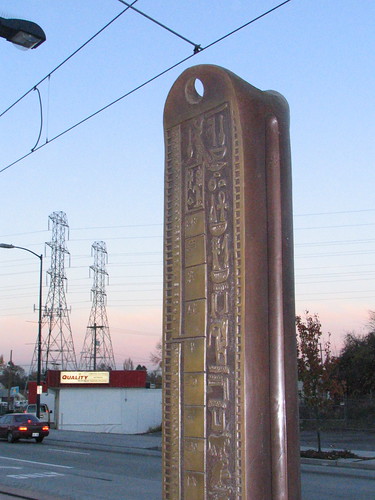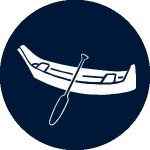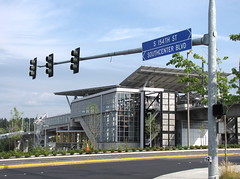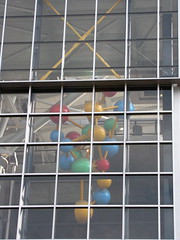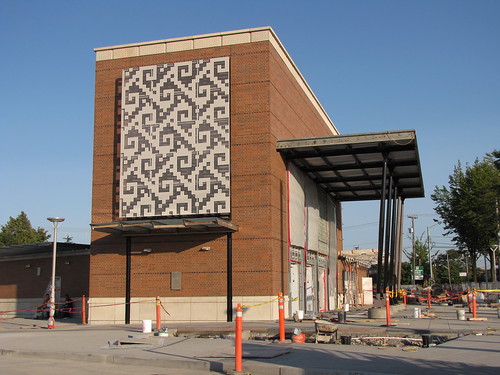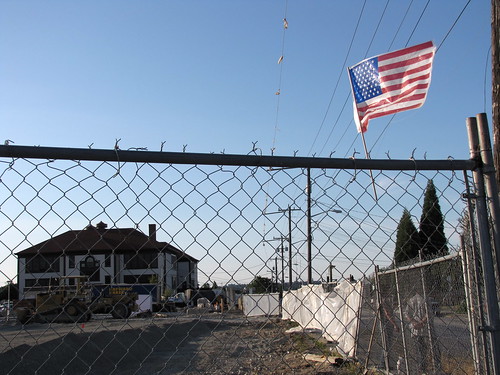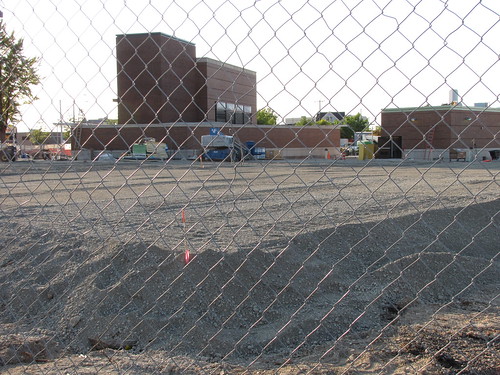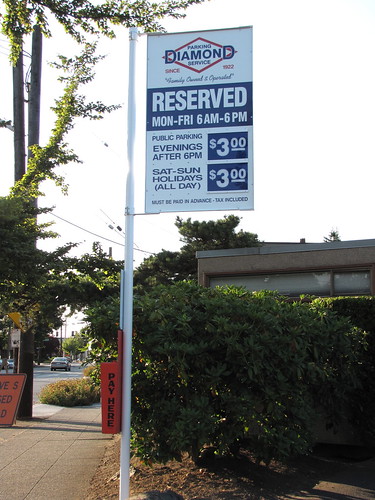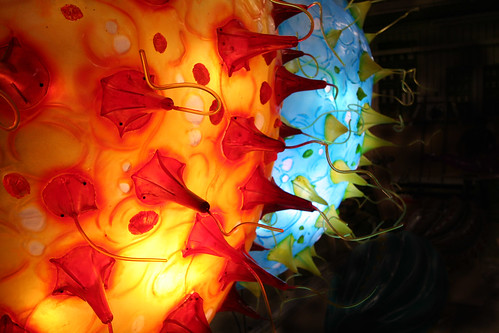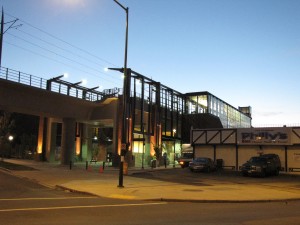
Thirty years after the stadium’s demise, the area is a relatively automobile-focused district containing fast food and big stores like Lowe’s, Rite Aid, and QFC, mostly surrounded by large parking lots, with cars speeding by on Rainier Avenue. It’s not a pedestrian-friendly environment, but the intent is that the new station, and the potential transit-friendly development it will attract, will improve that.
East of the station rises the imposing neoclassical façade of Franklin High School, which opened in 1912 and was renovated in the late 1980s.
Northeast of Lowe’s on MLK, between South Walker and South Bayview streets, you’ll find the Martin Luther King Junior Memorial Park, a tiered, grassy amphitheatre-like space containing a reflecting pool and a 30-foot-tall granite sculpture by Robert Kelly, inspired by King’s “I’ve Been to the Mountaintop” speech.
There is good eating to be found near the station, even if you have to dodge a few cars to find it. Thai Recipe is located in the same strip mall as Domino’s on McClellan, and it is the only Thai restaurant we know of that even borders on North Beacon Hill. The very friendly staff serves good, reliable, and tasty Thai food, available for take out or to eat in the small dining room.
Perhaps your current craving is for a cheesesteak sandwich instead. If so, there’s The Original Philly’s, almost in the shadow of Mount Baker station at the intersection of Rainier and McClellan.
The art at this station includes chandeliers on the underside of the guideway, made from recycled “cobra head” street lights (Sky Within by Sheila Klein), and painted glass forming splashes of color on the glass face of the station (Rain, Steam and Speed and Seattle Sunrise, both by Guy Kemper);
If you continue on the train toward downtown from Mount Baker, you will then turn west and enter the Beacon Hill tunnel. Here’s a video taken by Oran Viriyincy to give you a taste of what it’s like to ride the train from Mount Baker into the tunnel.

